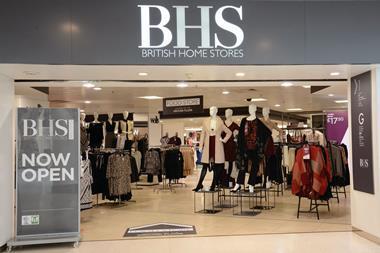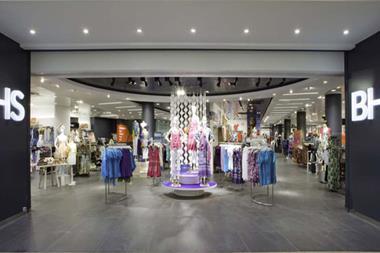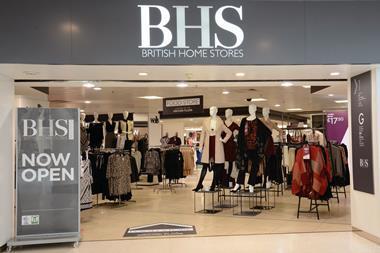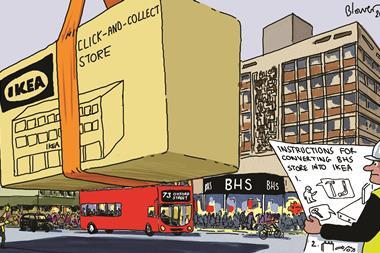Last year, for only the second time in a decade, department store group BHS recorded annual like-for-like growth.
And the new financial year, which began in September, has got off to an “amazing start”, reveals chief executive Darren Topp.
But Topp is at pains to emphasise that BHS, once a beacon of high street success, remains very much in turnaround and attempts to revive it have only just begun.
The pleasing performance in recent months was boosted, as it has been at other retailers, by the weather.
But grateful as he may be for that, Topp and his team intend to make their own luck.
A new-look store in Watford, unveiled this week, highlights some of the steps taken so far and the shape of things to come.
New store design and logo
The branch, part of the Intu Harlequin centre but also accessible from the high street, incorporates a remodelled convenience food offer, various improvements to the wider store such as better merchandising and a revamped cafe run by catering giant Compass.
It is the food offer that Topp believes can play a pivotal role in whetting consumers’ appetites for BHS once again.
“Food doubles our footfall overnight”
Darren Topp, BHS
Following pilots at three stores, in partnership with supplier Booker, a convenience food shop is now being rolled out in BHS stores.
Consumer research by the retailer showed that among BHS’s existing customers – it serves a million a week – and those who do not shop there, food was top of the wishlist.
“Food doubles our footfall overnight,” says Topp. “And we’ve got the space, we’ve got the consents so the barriers to entry are very few.”
The tie-up with Booker makes the initiative easy for BHS. Topp explains: “Because of our relationship with Booker I don’t need a meat buyer, I don’t need a supply chain – I’ve got all that through them.”
Refining the food offer
At Watford the original food offer that launched last year has been refined.
While value remains a foundation-stone, the range has been modified. Along with pound-deals, consumers can also buy Champagne at £40. Less space has been devoted to frozen and more to fresh.
Practically, the layout has been changed so that aisle-ends are more effectively used to promote deals. The good-better-best price architecture has been made clearer in displays. The product catalogue can be localised. It is much more like a supermarket than the first incarnations.

Because food retail is such a ferocious battleground, some might question why BHS thinks it can become a significant player. Topp is confident that it can.
He says that BHS’s core-customer, a time-short “modern, working mum” buying for the family wants to get everything from food to fashion under one roof. No other retailer is providing that in the way she wants, Topp believes.
The nearest equivalent, and a retailer with which BHS stood comparison in its heyday, is Marks & Spencer observes Topp.
But M&S does not sell brands while BHS does, and Topp’s customers want those big names he says.
That extends from food to clothing and other ranges, where, for instance, BHS has concessionaires such as Claire’s Accessories and stocks Arcadia fashion brands.
Roll-out plan
So far the food shops have been dropped into six BHS stores and will feature in 20 by mid-October. There will be a pause during the peak trading period before roll-out continues.
The changes make sense but, following years of travails and the sale of BHS for £1 to formerly unknown investor Retail Acquisitions in March, some in retail wonder whether BHS – which has just raised £65m to fund its turnaround – really has a future.
Will it still be around in a year or two, they ask.
“The answer is that we’re spending a lot of money for a business that isn’t going to be there,” Topp responds. “It’s absolutely going to be here in a year’s time.
“We’ve got an ops board of very experienced retailers. Retail Acquisitions are experienced business people.”
He hopes to get to breakeven “or thereabouts” over a two-year period.
“It will all be in what we deliver. This is about our million customers and the 10,000 people who work here,” he says.
There may be a long way to go, but Topp is emphatic that the destination of recovery can be reached.

























1 Reader's comment